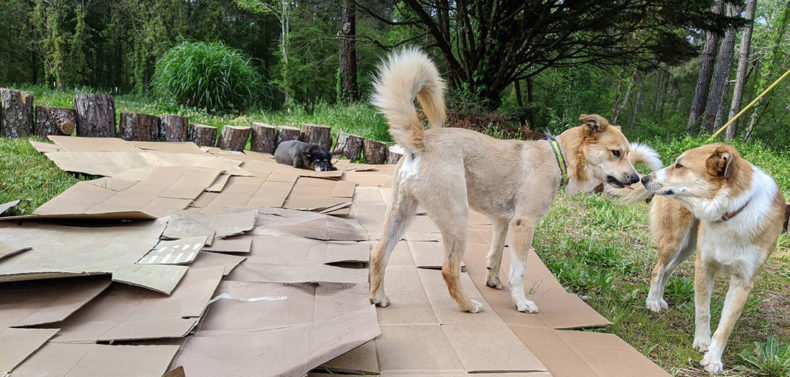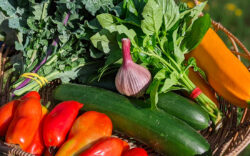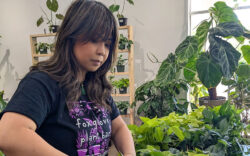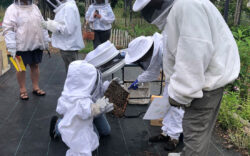It’s July, and your garden might be looking like it’s struggling a bit. Mine is. Heck, I’m struggling a bit. Between weeds seemingly growing overnight, a heat index of 100 degrees-plus and the ongoing dumpster fire that’s national politics, it’s a lot. But hey, it’s OK.
For me, July gardening is pushing past the comfort point and celebrating small victories, even if there’s a huge list of to-do’s right behind the did-do’s. So, what effort can we put forth to feel a greater sense of accomplishment in the garden? Here are a few ideas.
Okra: July is a great time to plant okra. This is not a porch plant, and will need a raised bed or an in-ground garden. Though transplanting can work, okra’s hardy enough to handle direct seeding in the summer. Leave about 8–12 inches of room around each seed. Okra looks delicate when it first sprouts, but often shoots up past 7 feet. The best backyard variety is Clemson Spineless. Be prepared to harvest two to three times a week to keep pods small (6 inches is a good size) and tender. The name says “spineless,” but every plant has aggravating prickles that can leave rashes on skin. Wear gloves and long sleeves when harvesting. Pick okra after the dew has dried up to reduce moisture retention and possible mold growth. Store your collected produce in a paper bag in the fridge for a week. Discard any pods growing mold. If you’re looking for a side dish of fried okra once or twice a week, you’ll want about eight plants.
Beans: Beans like the heat, direct seeding and poor soil. Bush varieties, like Provider, typically won’t grow taller than a couple of feet and can fit on a porch. Pole beans, like Kentucky Wonder and Blue Lake, will need a trellis to climb. Seed beans 4 inches apart. Fertilizer often causes bean plants to produce more leaves and less pods, making it even harder to search for these tasty snacks through all the greenery. Beans, like okra, keep well in a paper bag in the fridge and will require regular harvesting during the week. If this is your first year growing beans, I’d suggest starting with about a dozen plants—you’ll get green beans for your dinner table without them taking over your garden.
Basil: There’s still enough time to seed another round of basil before the frost hits. I start basil in seed trays to help the tender seedlings, but once it’s a few days old, it can withstand most garden pests. Basil needs regular irrigation, especially if it’s in a pot. Forget this plant for a day, and it gets crispy real fast. Basil can handle some crowding, especially with regular harvesting. I plant it 6–12 inches apart, depending on how much I’ll cut it back. Concentrated wet basil plants can invite mold to take over and destroy your crop.
Cosmos: This fun flower is an easy way to add joy and color to your garden in September with little effort in July. Pick a sunny location in your raised bed or in-ground garden, knock the weeds down with a lawn mower, weed eater or clippers, and place cardboard to cover the preferred patch. Buy one pack of cosmos and mix with a few handfuls of sand for easy broadcasting. Pile compost 4 inches high and spread the seed across the compost, trying to cover as uniformly as possible. Press seeds into the soil with a trowel, hands or feet. Water daily until seedlings are sprung and about 3 inches tall.
Sprouting New Ideas: This isn’t something to plant, but still is a great task to do indoors in the July heat. Take stock of gardening projects, and start researching any new endeavors. Big box stores often have deals on gardening supplies in the fall, so it’s a great time to think about what you might want to add to your arsenal in terms of tools or infrastructure. I’m looking at electric edge trimmers and a Japanese weeding sickle.
Fall also is the best time in Georgia to plant trees and bushes—so if you’ve got a yard, now is a good time to read some books and articles on what plants make the most sense for your garden. I’ve got my blackberry, raspberry and gooseberry bushes slowly growing in pots on the side deck, but I’m looking to add a few more blueberries to the mix before planting everything in November. To narrow down your options, talk to friends and neighbors about plants you love in their yards. Visit the Georgia Botanical Garden, and check out spots that are similar to your environment. I’ve also poured over The Georgia Gardener’s Book of Plant Lists by John A. Denson for several years, a resource that spells out exactly what can work where. From “Native Shrubs for Fall Color” to “Drought Tolerant Ground Covers” and “Trees for Edible Landscapes,” it’s a big, well-researched, subdivided list of what could be possible in your Georgia yard.
Like what you just read? Support Flagpole by making a donation today. Every dollar you give helps fund our ongoing mission to provide Athens with quality, independent journalism.









